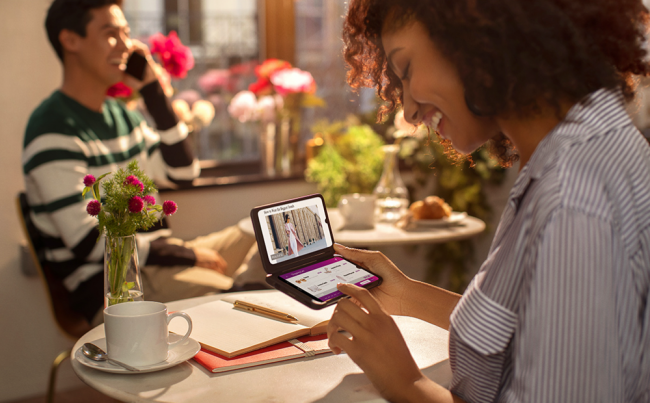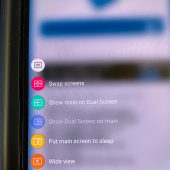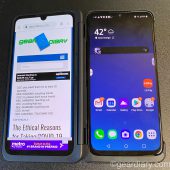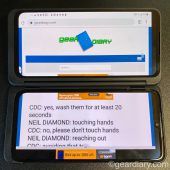The iPhone ushered in the era of slab phones and quickly became the design-standard for the industry. Companies looking for “the next big thing” are exploring dual-screen phones. Some look more intriguing than others, but all are pricey as hell. With the LG G8X ThinQ Dual Screen, LG has taken a unique approach and kept the phone affordable.
Do more at once with LG G8X ThinQ Dual Screen, and multitask like never before.
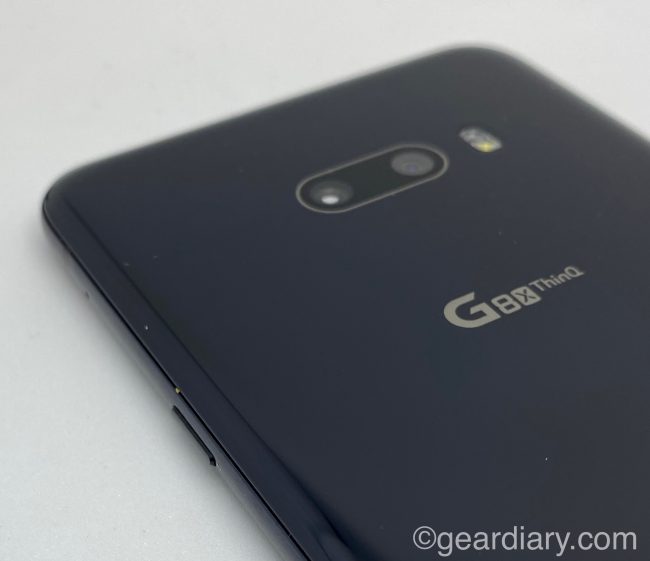
That’s how LG describes the G8X ThinQ Dual Screen. As you will see, it is an apt way to capture what this unusual device is all about. To be clear, this isn’t the first time we have been wowed by LG’s approach to dual-screen devices. In February of 2019, Judie wrote about the LG V50 ThinQ and its dual-screen case. And last month, she posted on the LG V60 ThinQ Dual Screen. As both of those posts make clear, LG has settled upon their approach to dual-screen phones and is busy refining it. We have the LG G8X ThinQ Dual Screen in hand and are excited to share some of our thoughts with all of you.
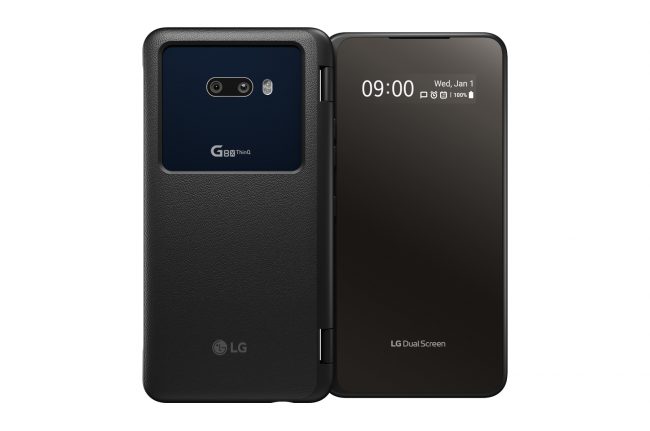
A great deal has been written about the LG G8X ThinQ Dual Screen while I’ve been putting it through its paces. Rather than repeat what is available all over the internet, I thought I would share some of the things that have impressed me during the last few weeks using the phone, as well as some things that have not. Before we dig into that, however, let’s take a quick look at the phone itself.
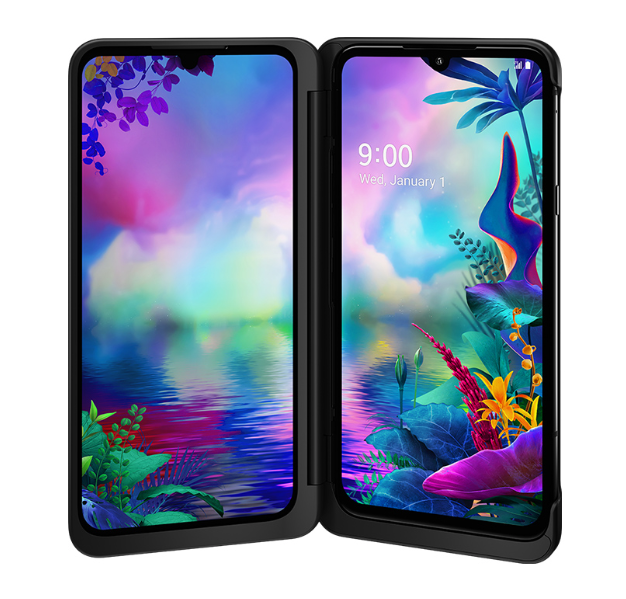
For those of you who are not familiar with the LG G8X ThinQ Dual Screen, that last statement might seem a bit odd. After all, how do we look at the phone without… looking at the phone. The answer is one of the key things that differentiate the LG G8X ThinQ Dual Screen from other dual-screen devices on the market. Most dual-screen have a single foldable screen that either fold in on itself, thereby hiding the screen or fold out and, when closed, have a screen on both the front and back. The LG G8X ThinQ Dual Screen takes a different approach. It is a traditional slab phone that can be used as you would any other large phone. It, however, comes with an innovative case that adds a second, separate screen. Ideally, this design gives users the best of both worlds. But does it? That’s the question I’ve been asking myself since the phone first arrived.
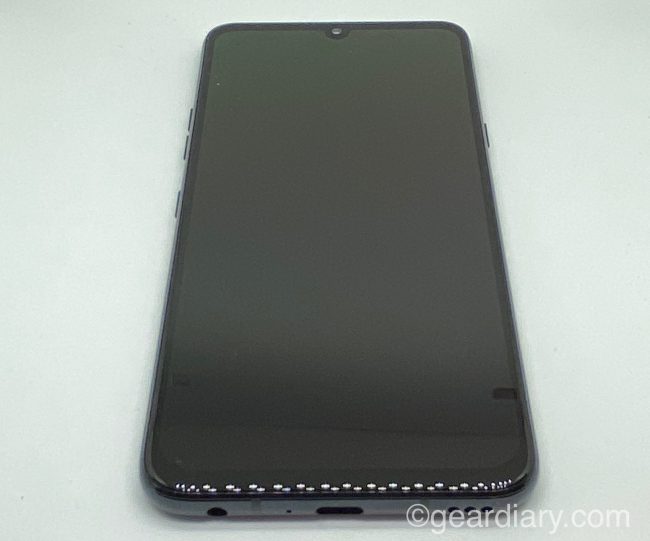
So let’s look at the phone itself. The LG G8X ThinQ has a 6.4” FHD+ OLED screen with an aspect ratio of 19.5:9. Inside the phone, there is 128 GB of storage with slightly more than 102GB available. The phone can accept up to 2TB of additional storage via a microSD card. That’s likely more storage than you will ever need on your phone, but it is nice to know it is possible.
Striking Sleek Design: This device is crafted with smooth, contoured glass for a modern aesthetic. Plus, rounded corners and a sophisticated pattern add an extra touch of elegance.
The front of the phone is entirely glass with a small pinhole camera at the center of the top. If you hate pinhole cutouts, you can change a setting and turn it into a black bar across the top. I honestly can’t understand why anyone would do that, but the option is there for those who are troubled by the pinhole camera cutout.
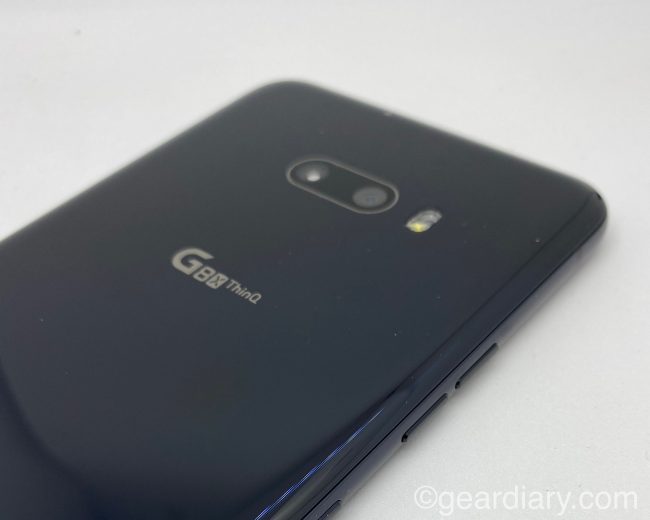
On the left side, there are volume up and down buttons and a dedicated button for activating Google Assistant. I love the Pixel’s innovative approach that allows you to bring up the Assistant by simply squeezing the phone, but this dedicated button gets the job done too. Toward the top of the left side, there is a small hole for the microphone. It is difficult to see, but it is there.

The sleep/wake/power button sits on the right side of the phone. Access to the SIM and microSD expansion slot is at the top.
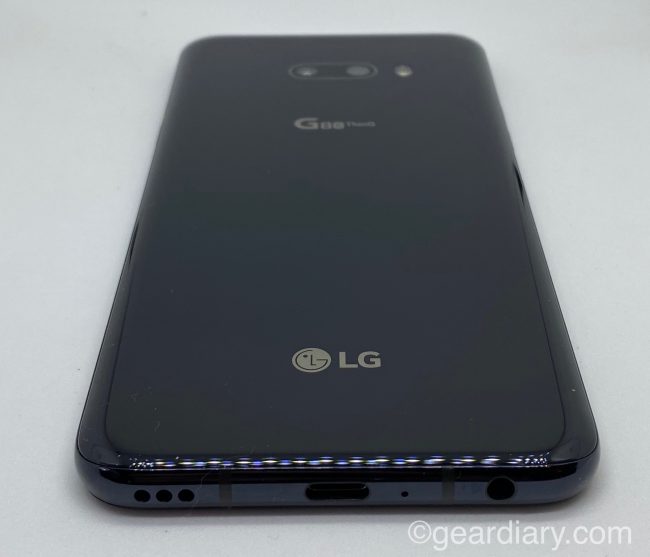
On the bottom, you will find the speaker, the USB-C charging port, another microphone, and … a 3.5mm headphone jack. Yup, LG has decided to stick with the traditional headphone jack for now. Unfortunately, they didn’t see fit to include headphones in the box, but if you have a pair of wired headphones hanging around, you will be happy to know they can still be used. Of course, the phone can also be charged wirelessly if you have a Qi-enabled charger handy.
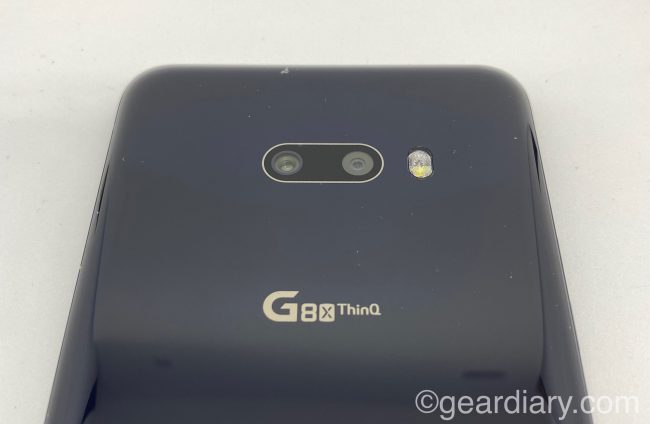
On the back, you will find both cameras and the flash. Notably, the cameras sit flush with the phone. And while that indicates that this promises to be a good smartphone camera but not a “great” one, I do love the fact that there is no camera bulge that looks like it was thrown on as an afterthought, gets scratched, and rocks when you put the phone on a desk.
The sides of the back have a gentle curve toward the from that feels fantastic in the hand and gives an otherwise uninspired design a bit of style.
In all, this is a good-looking but not inspired design.
Fast Performance, Bigger Battery: A Qualcomm Snapdragon 855 Octa-core Processor delivers fast, powerful, experiences—all while providing what matters most: insane battery life, powered by our long-lasting 4,000 mAh battery.
The phone is rather zippy. It has a Qualcomm Snapdragon 855 Octa-core processor and a 4,000mAh battery. That means it is not only fast but that it will last an entire day and then some. (Obviously, your mileage will vary depending upon how you use the device.) When you need to charge the phone, you can either connect a cable, is offers Qualcomm Fast charging QC 4.0, and it has wireless charging too.
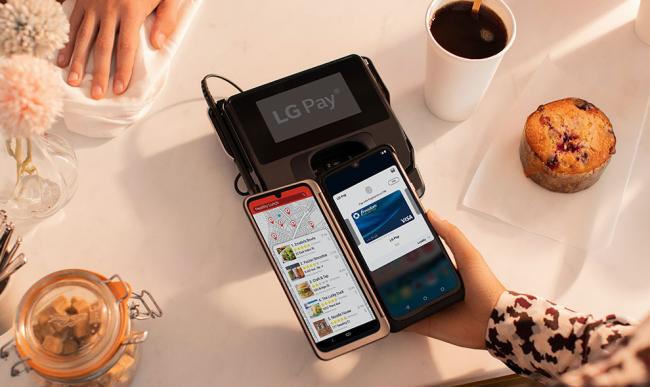
A Quick Way to Pay: Leave your plastic cards at home and pay quickly with your phone virtually everywhere at both NFC and magstripe payment terminals. LG Pay is a digital wallet that lets you put your credit/ debit, gift, and loyalty cards in one simple-to-use app.
As you would expect, the phone packs Wi-Fi 802.11 a/b/g/n/ac, Bluetooth 5.0, and NFC connectivity. The NFC is ideal for using LG Pay instead of reaching for your wallet.
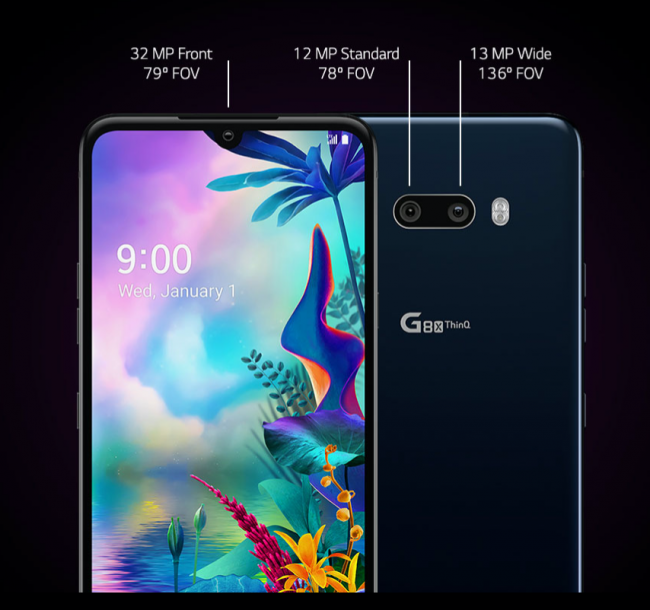
Superb Pixel-Level Detail + 4x Zoom Power: An immense 32 MP front camera gives you superb detail, 4x zoom capability, and the ability to crop photos with the high-resolution quality you expect—and deserve. This is more megapixels than you’ll find in any LG selfie camera!
The rear cameras are a 12 MP Standard with a 78° FOV and a 13 MP Wide-Angle offering 136° FOV. That’s pretty substantial for any phone, let alone one that is priced as a mid-tier device.
The front camera surprised me when I realized it is an impressive 32MP shooter with a 78° FOV. In all, this isn’t the best camera available on a phone in 2020, but it certainly is no slouch. Moreover, if this were just a year or two ago, the hardware being into this phone would be considered bleeding edge. High-end phone cameras have made it to places unheard of until recently, which pushes this phone back into “really good but not the best” territory, but this system will be more than enough for the vast majority of people.
Camera features include:
- Capture Every Whisper: It’s your turn to shine. Capture videos with refined sound and detail that tickle your senses and send tingles down your spine.
- The Ultra-Widest Lens, Mic Drop!: With a whopping 136? field of view, truly get it all with the widest camera lens out there. Fully capture epic vistas, sweeping landscapes, beautiful architecture, and huge group shots that take your breath away.
- Portrait Keep the Focus on You: Add a professional touch by zeroing in on yourself and softening backdrops for an artistic bokeh-blur effect that allows you to stand out.
- Action Shot Clear, Action-Packed Shots: Capture crisp, sharp, and clear photos of fast-moving subjects. This feature automatically adjusts the shutter speed to minimize photo blur and keeps subjects in focus.
- AI CAM Smart Photo Enhancement: This clever camera recognizes up to 19 subjects and recommends optimized filter options to enhance the exposure, saturation, and more.
- Time Lapse Memories at the Speed of Life: Vivid and intricate time-lapse videos help you turn anything from a flower blooming to an inspiring sunrise into a timeless, storytelling film.
- Google Lens Search What You See: Get stuff done faster, and interact with the world around you using your camera and AI integration. Copy and paste text, add events to your calendar, find products online, and see similar styles, identify popular plants and animals, learn about landmarks, and more.
- Superior Sound Experience: This is what balance sounds like, with 2.4W audio distributed evenly for optimal stereo sound. And with your headphones on, DTS:X 3D Surround Sound lets you get lost in your movies, music, and games with audio that seems to come from all directions.
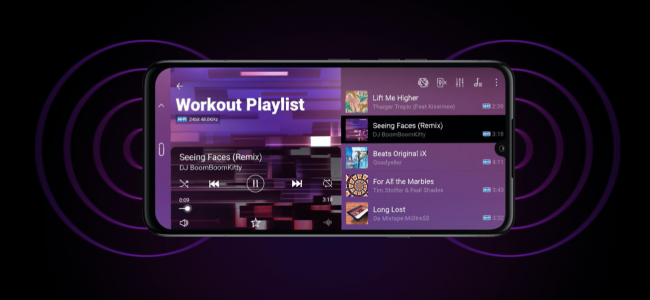
Finally, LQ wasn’t content to let mobile audio be the compromise it so often is. Instead, they built a 32Bit Hi-Fi Quad DAC and DTS: X Virtual Surround into it. The audio experience from the phone is superb.
So while the LG G8X ThinQ isn’t a top tier device, it is an impressive phone even by today’s standards and an amazing phone if you compare it to devices from just a few years ago. And while many phones, my iPhone 11 included, cost $1000 or more, this device is under $700 unlocked. (It is even less with carrier activation.) That alone makes it a decent choice if you are in the market for a new, large Android phone.
Specifications:
- DISPLAY: 6.4”1 FHD + OLED 19.5:9
- MEMORY: Internal Memory: 128 GB ROM (up to 102.8 GB usable), Expandable up to 2 TB with Micro SD Card
- AUDIO: 32Bit Hi-Fi Quad DAC and DTS: X Virtual Surround
- CHARGING: Fast Charging QC 4.0 + Wireless Charging
- CHIPSET: Qualcomm Snapdragon 855 Octa-core
- CAMERA:
Rear: 12 MP Standard, 78° FOV and 13 MP Wide-Angle, 136° FOV
Front: 32 MP with Pixel Binning, 78° FOV - CONNECTIVITY: Wi-Fi 802.11 a/b/g/n/ac, Bluetooth Version 5.0, NFC
- BATTERY: 4,000 mAh3
- BIOMETRICS: In-display Fingerprint Sensor
So that’s a quick look at the LG G8X ThinQ phone. It’s not exciting but, in a world where premium phones are now more than $1000, this is an excellent phone at a mintier-phone price. That alone makes it a winner in my eyes.
BUT… that is only part of the story here.
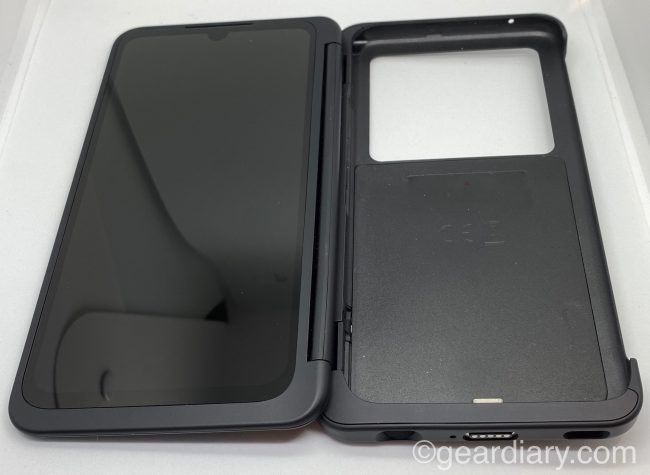
The LG G8X ThinQ Dual Screen
As Judie shared in her posts about the LG V50 and LG V60, this company is taking an unusual approach to dual-screen phones. Rather than develop a flexible screen that folds in on itself, LG decided to stick with the proven technology of large screens that don’t fold. Instead of taking a single screen and finding ways for it to fold, LG simply added a second 6.4” OLED FHD Display into the inside of a protective cover. When closed, you get the same slab phone as we described above, only double the thickness. When opened, however, the user is greeted by the 6.4” screen of the phone AND a 6.4” screen to its left. That provides double the screen-estate without the potential failures we’ve seen time and time again with folding screens. As we will see, it isn’t perfect, but it is a unique approach that solves many of the issues seen in devices with folding screens.
Interestingly, the second screen is the same display panel as the one on the phone. It even has the selfie-camera pinhole even though it lacks a camera. Moreover, the second screen is powered by the phone itself, so there is no need to charge the case separately.
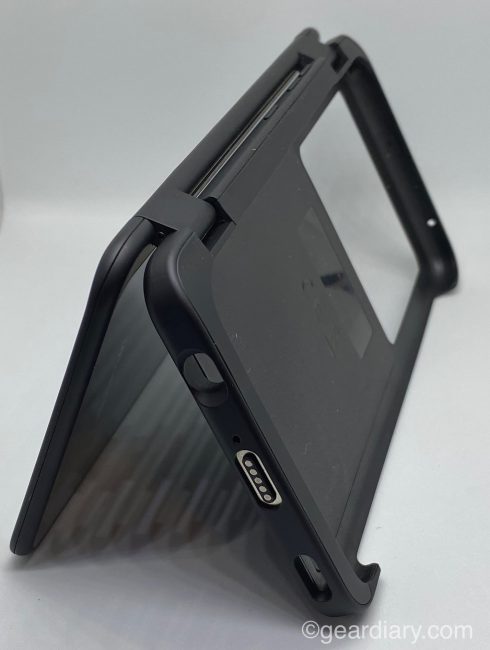
Flexible Point of View: With a 360 freestop hinge, flip the screen around or lock it in place at any angle. Open it like a laptop, use it in stand or tent mode, or do a full 360° flip for a versatile viewing experience.
The Hinge:

To make this screen case work properly, LG had to design a hinge that provided maximum flexibility. The hinge on this device is loose enough to open with ease but tight enough that it will hold any position into which it is placed. That will become important when we look at some of the ways this approach can be used.
The hinge has been redesigned and now can flip all the way around to sit flush with the back of the phone. That means you can have the phone in the case but still use it as a slab phone. Yes, the case and screen make it thick, but the design means you don’t have to remove the phone every time you want to use it “normally.”
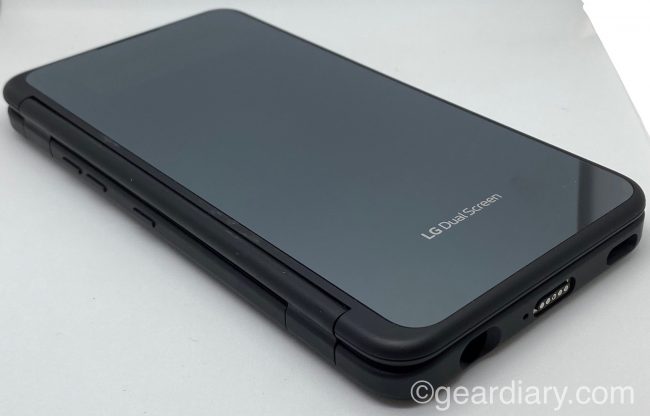
The front of the screen case is a mirrored plastic that is a fingerprint magnet. The “LG Dual Screen” logo is embossed toward the bottom but, other than that, it would seem there is nothing of interest and no functionality to this glossy surface. In this case, however, looks can be deceiving.
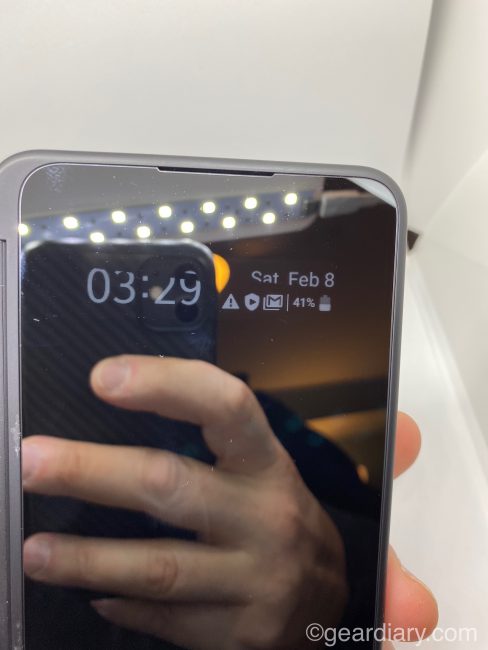
When the phone is one, this cover doubles as a notification display that lets you see the time, remaining battery life, and a variety of notifications. It is a great way to get a general sense of what is going on without needing to open the case and fire up the phone. (If you look closely, you can see a small slit at the top of this surface. That allows the sound from the phone’s speaker to pass through when the case is closed.)
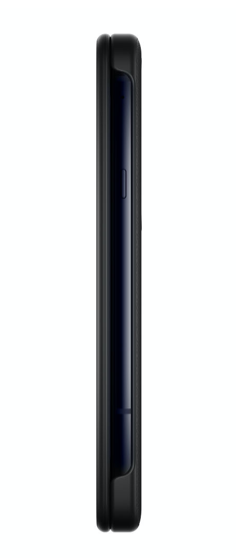
The right side of the phone remains largely exposed, so you still have access to the power button.
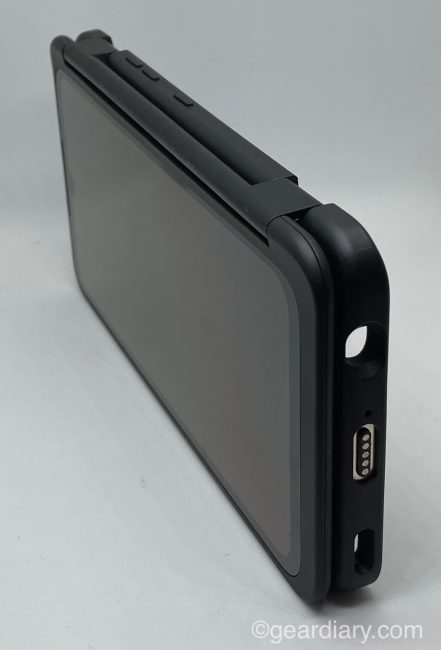
The buttons on the left side are covered by a second “layer” of buttons. These work surprisingly well and, if you didn’t know better, their responsiveness would leave you thinking they were the actual buttons.

At the bottom, there is a cutout so you can access the 3.5mm headphone jack. The cutout should be large enough for most headphones, but thick plugs probably won’t work unless you have an adapter that can fit without the cutout. A second cutout leaves the phone’s speaker exposed.

Between these two cutouts is a charging area that is ready for the included Fast Charge adapter dongle.

On the plus side, this design is the magnetic connection made between the dongle and the case. When the two are brought into proximity with one another, they connect and stay connected until you pull them apart. (The other side of the dongle has a USB-C port into which a USB-C charging cable goes.) But while this approach works … I hate it. I hate that, while the magnets are strong, they can release their grip if the dongle is angled away from the phone. Worse than that, if you don’t have the dongle with you or, worse yet, lose it, you are out of luck. Fortunately, LG sells replacement dongles for the reasonable price of just $7.99. [Were this Apple, you know the same dongle would be $35.] You can still charge the phone directly via USB-C, but you will need to pull it from the case to do that. I hate this design, and I wish LG would find a way to ditch the dongle and use USB-C for charging whether the phone is in the case or not.

Instantly See Notifications: See essentials at a glance. The cover display allows you to view the time and notifications, like when messages are received, while the dual-screen is closed.

At the back of the case, there is a large cutout. It leaves the dual camera lenses and flash exposed and provides space for the G8X ThinQ logo. I don’t understand why they made this cutout as large as they did since it deserves no purpose. It is an interesting design choice but not one I would have made.

There are several ways you can use the dual screens. All of them hinge off of the “360 freest hinge.” As LG puts it, “With a 360 freestop hinge, flip the screen around or lock it in place at any angle. Open it like a laptop, use it in stand or tent mode, or do a full 360° flip for a versatile viewing experience.”
The big question is, of course, why would you want two large screens?
Dual Screen Multitasking Mode

The first way to use the dual-screen setup is to simply think about the screens as individual screens that “speak” to one another.

Tapping the small icon that sits on the side of the phone’s screen yields a “Turn on Dual screen icon.” Tapping it fires up the second screen that sits inside the case.
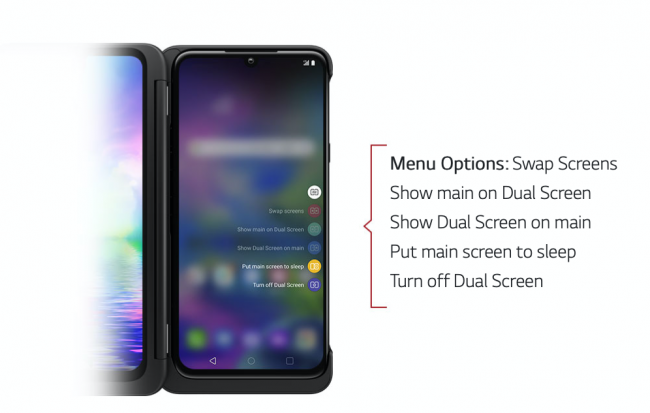
If you tap the same small icon now, you will be presented with several choices that include Swap Screens, Show Main on Dual Screen, Put Main Screen to Sleep, and Turn off Dual Screen.
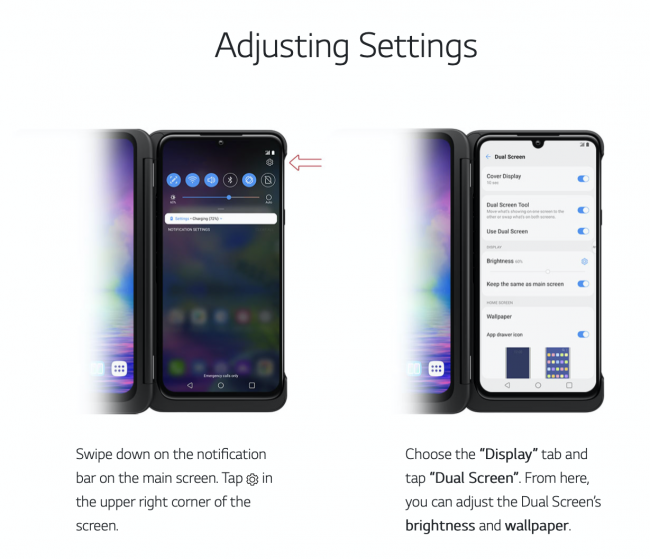
You can also adjust the settings of the dual-screen mode by digging a bit deeper with a few taps.
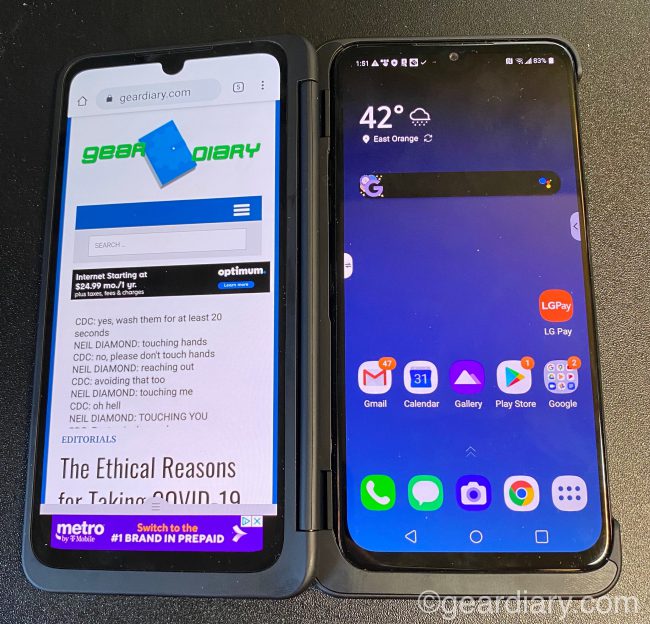
You can now use the dual screens in the simplest way possible. If you open a browser on the phone’s screen, tap the small dual-screen icon and select “Swap Screens” the browser window will move over to the second screen.
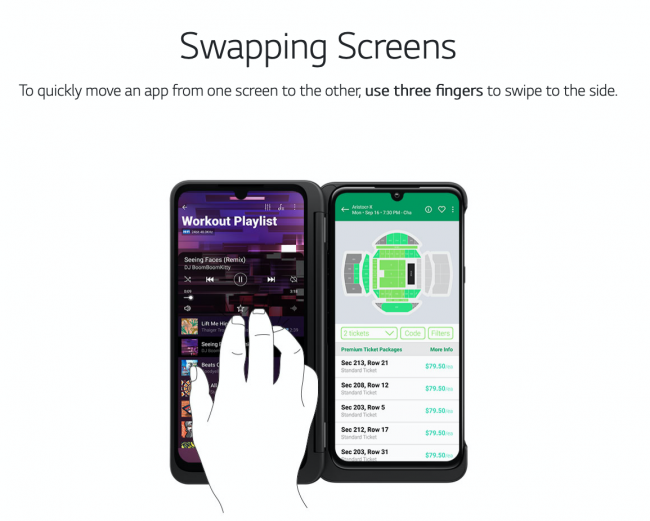
This can also be done using three fingers swiped simultaneously on the screen. Now you can select a second browser window or any other app and fire it up on the phone’s screen.
That yields two independent screens that each have their specific app or browser window open. That may not sound like much, but being able to have two 6.4” displays that work independently is far more convenient than you might expect.
Surf the Web in Style: Make the most of your web browsers. Look at the webpage on one screen, and see more details on the other while reading articles, shopping, and more.
But it gets better. In the settings, you can lock which app appears on the secondary dual screen when the phone is fired up in dual screen mode. In my case, I have it set to pull up a browser window with my Gmail. Now, whenever I open up the case, my email is immediately present on the secondary screen, and I can use the phone’s display however I want.
And it gets even better. If I bring up something like the browser app and then activate the dual-screen control and select “Wide View,” the single webpage on the phone’s display is spread over both of the screens. It’s a cool trick, but the gap between the two screens that are created by the hinge doesn’t make this very practical. It does work a bit better if you switch the orientation to landscape, but it isn’t ideal.
Gamepad Mode

Control and Compete: Play for the win by using the second screen as a customizable controller, freeing up your main screen for all the action. Choose from multiple virtual controllers or design your own to match your game play needs and style.
Wanting to leverage the potential of their dual-screen approach LG, the company baked a special gamepad functionality into the LG G8X ThinQ Dual Screen. The phone ships with some built-in gamepads, but you can also create your custom gamepad if not of the stock offerings meet your needs.
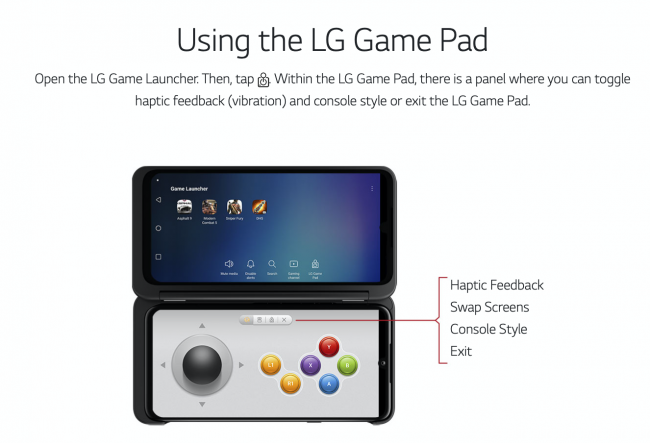
The GamePad functionality doesn’t work with every game, but for those it does, you get to enjoy the entire phone display for the game graphics and can use the dual-display to control the action. I’m not much of a gamer, but I can see this functionality being a key selling point for people who use their phones in this way.
Mini Laptop Mode
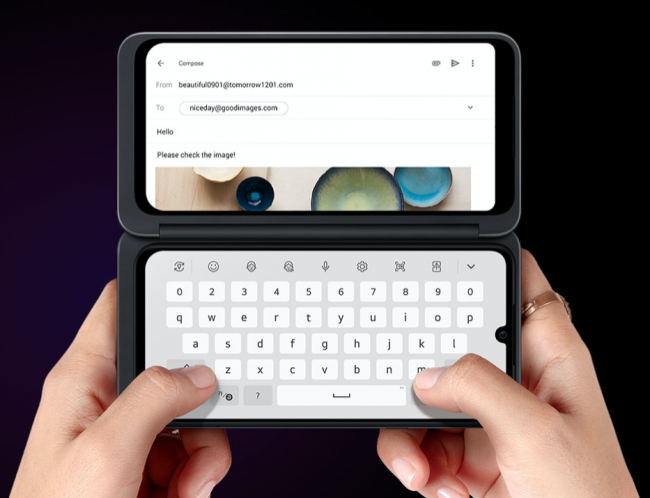
On-The-Go Mini Laptop: Convert your smartphone into a mini laptop while on-the-go with the LG Smart Keyboard. Use the entire bottom display as a full-screen virtual keyboard to write emails, edit presentations, text, or search the web in full-screen on the top display.
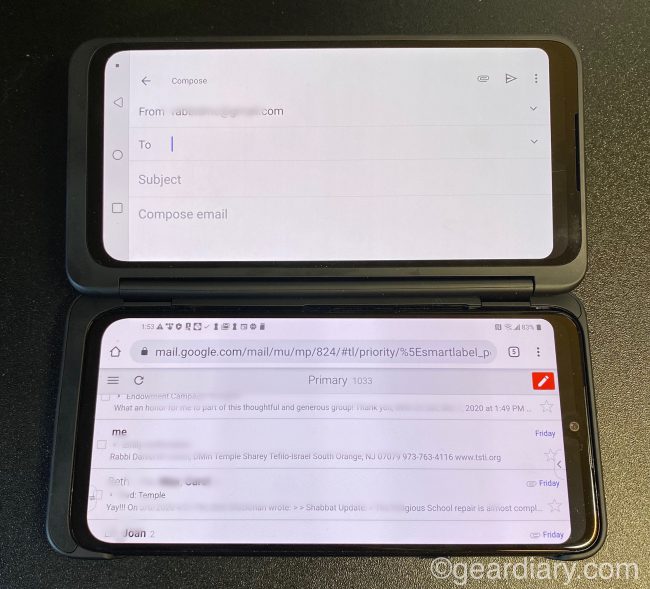
If you pull up your email in either the email app or the browser and turn the dive into landscape position… nothing happens.
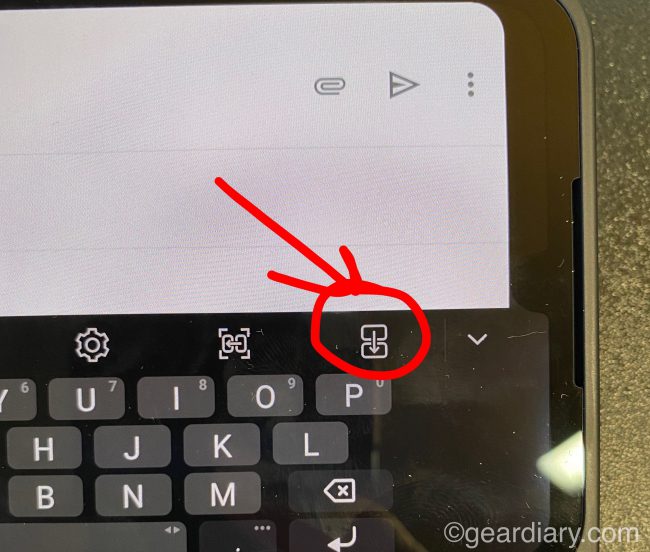
BUT, when you tap into a content field and bring up the soft keyboard, you are on the way to something unique. At the top of the soft keyboard, there is an icon that indicates two screens. Tapping, it results in the soft keyboard overlay disappearing and the entire dual-screen display turning into a keyboard.
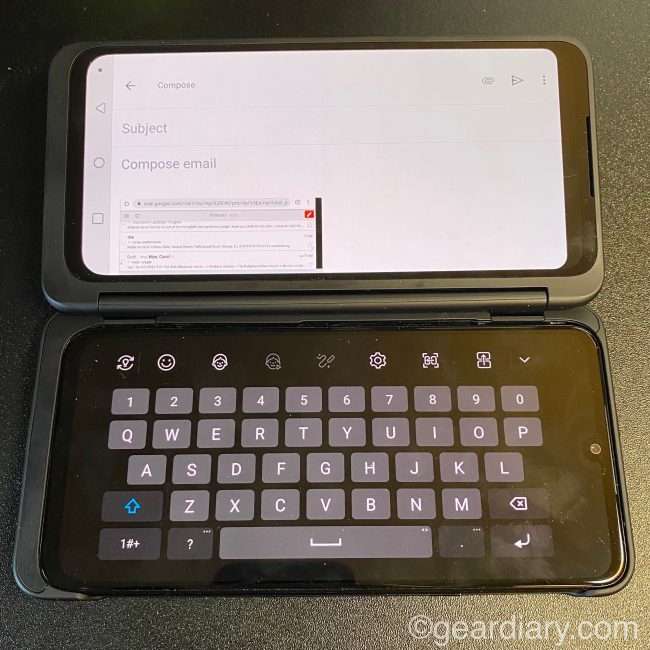
Now you get the benefit of your entire phone’s screen being the content email screen and the entire dual display screen serving as your keyboard. Best of all, this laptop mode also works with apps like Outlook, so you aren’t locked into the stock Google apps or the browser.
Make the Most of Images Mode:
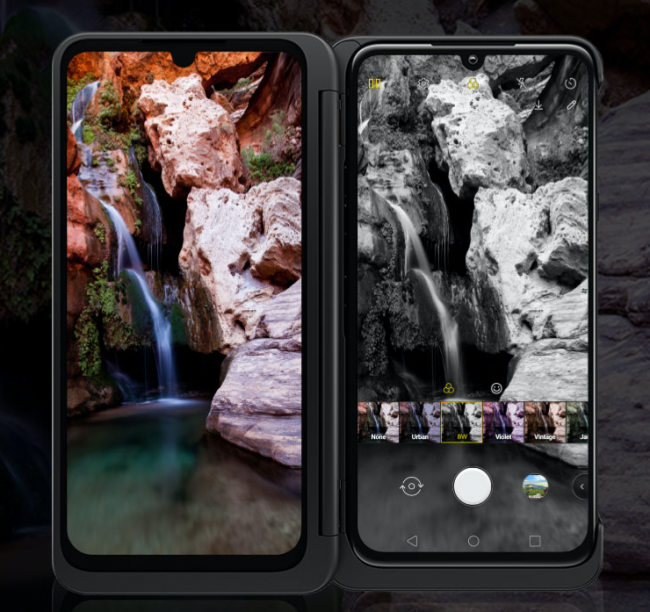
Add A Personal Touch To Images: Use the second screen to instantly view your pictures without having to exit the camera app. Try out different filters and edit on the main screen while previewing your full-size image on the dual-screen.
If you have ever taken a picture with your phone and then had to jump out of the camera app to check whether or not you captured the image you wanted, you are going to love this.
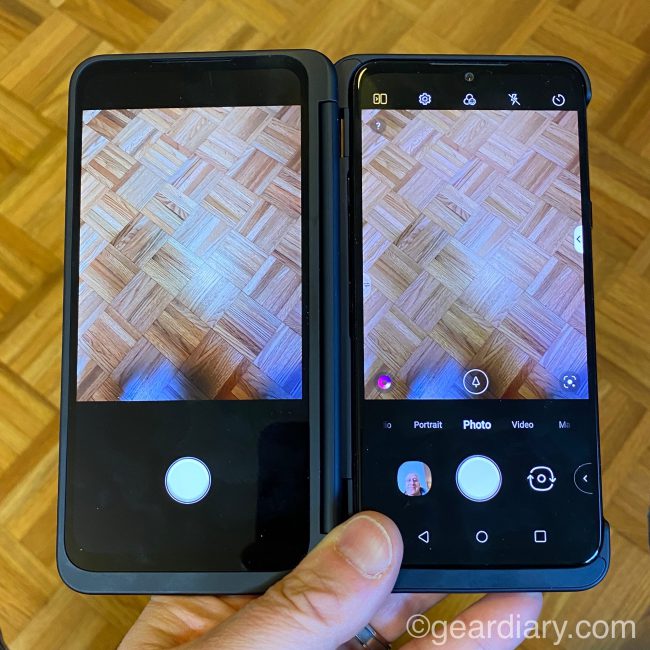
You can use the phone’s display as your image finder when shooting pictures and set it so that each new image you take immediately appears on the dual display. This lets you check each shot before taking the next. It also lets you test out various filters before going to the next shot. It is a nice convenience, but I’m not convinced it justifies the added weight and bulk of the dual-screen approach.
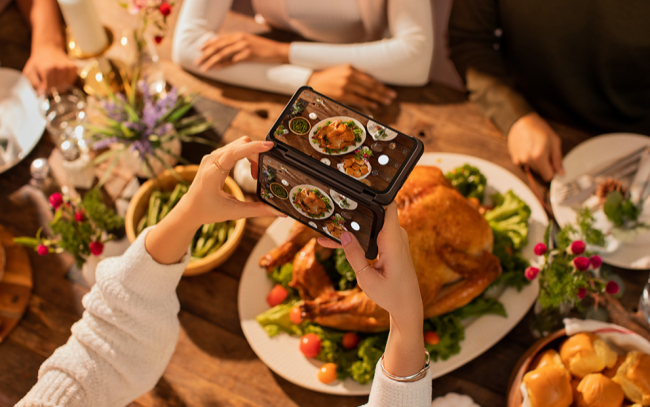
Dual Mirror Mode: With Mirror Mode, use the second screen to shoot from creative angles, such as over your head during a concert. Or, use the second screen as a live viewfinder to preview your selfies as you take them.
If you fire up the camera app, you will see a dual-screen icon at the upper left of the screen. Tapping it mirrors the phone’s display to the dual-screen dimply, so both displays function as the camera’s viewfinder. This allows you to use the dual-display as the camera viewfinder and get shots at angles that would otherwise be possible.
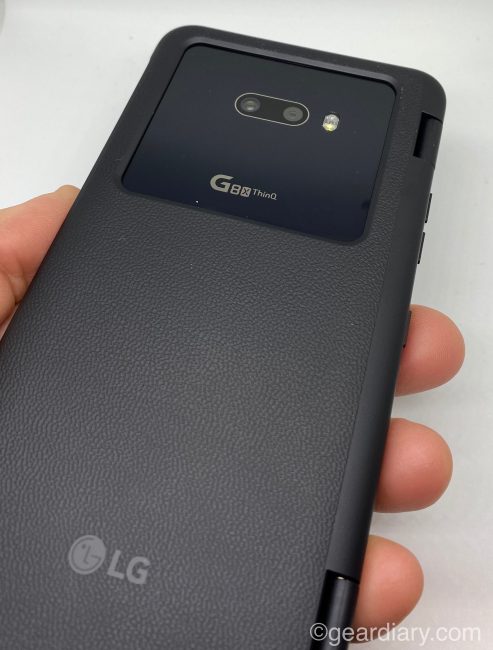
Fun, but It Still Falls Short
This dual-screen functionality is fun, and there are some neat tricks it can perform, but the design has its limitations. For example, I can watch a Netflix video on either display, but I can’t extend it to appear on both, thereby doubling the image. At the same time, since there is a thick black space between the screens, watching a video that is split in half wouldn’t be all too enjoyable. I’m sure I will find more examples of this limitation as I do more with it.
All of this is rather cool, but I’m still not quite sure if it is worth the added bulk and weight of the dual-screen case. So while I am still fascinated by LG’s approach to larger and dual screens, the thick border between the screens that are created by the hinge makes it a bit of a puzzle to me. It doesn’t double the phone’s 6.4” screen, but it does offer some unique ways to use your phone and your phone’s camera. In a world where phones feel iterative one model to the next, that’s not a terrible thing. It also doesn’t make me want to run out and get such a device. Still, at under $700 unlocked, there is a compelling argument one can make for purchasing this phone on its own. Then, if you think about the dual-screen case as a free add-on, it suddenly makes sense why someone might purchase this phone. It is a solid, large-screen performer that has a microSD expansion slot, retains the 3.5mm headphone jack, and gets good battery life. $700 for that is completely reasonable in today’s market, and the add-on accessory just makes it even more compelling. It is a phone worth checking out. Learn more here.
Source: Manufacturer supplied review sample of the LG G8X ThinQ Dual Screen
What I Like: Phone has a large screen and tons of power at a reasonable price; Expansion slot for microSD card; Good battery life; USB-C and Qi wireless charging available; Dual-screen case included; Hinge is solid and holds any angle or folds completely back to sit flat against the phone; Front notification display so phone doesn’t need to be opened as often
What Needs Improvement: Case requires a dongle for wired charging; Dual-screen is fun but not entirely practical, the curiosity will likely diminish over time; Dual-screen works with some but not all apps; With the case, the phone is big, bulky and heavy

